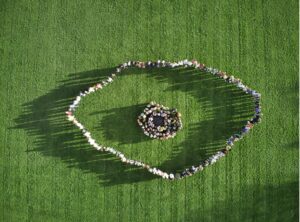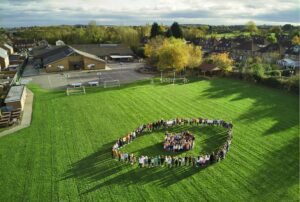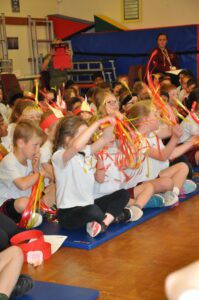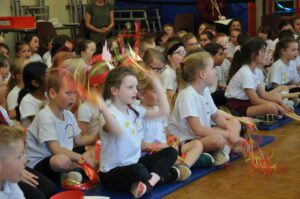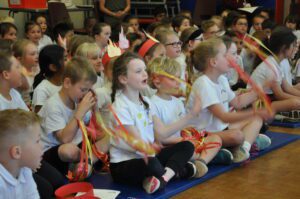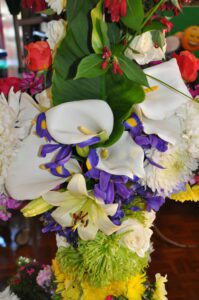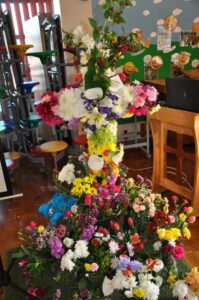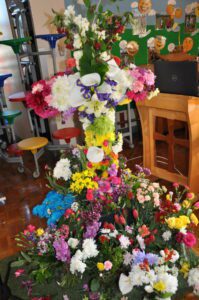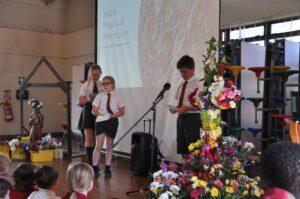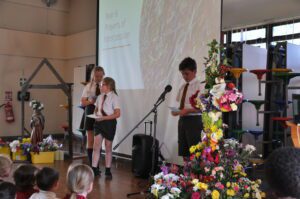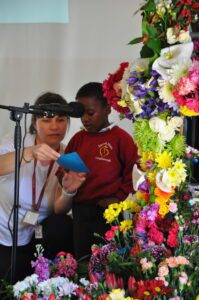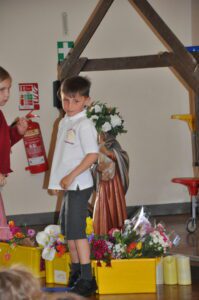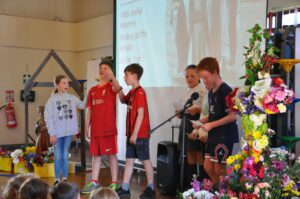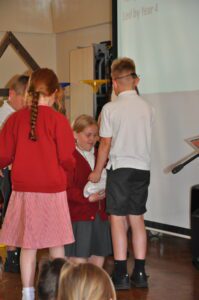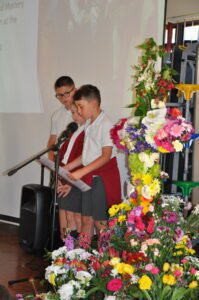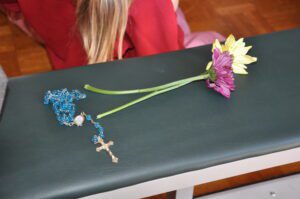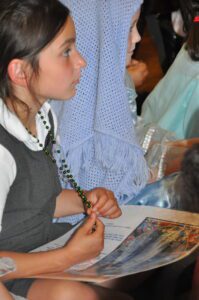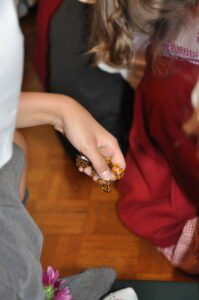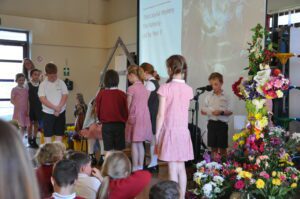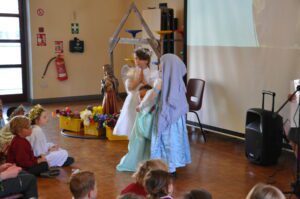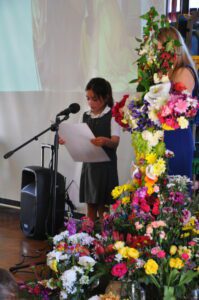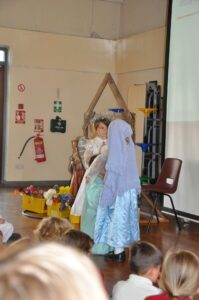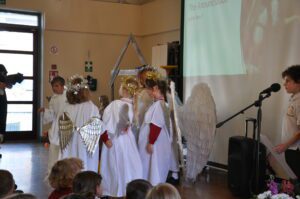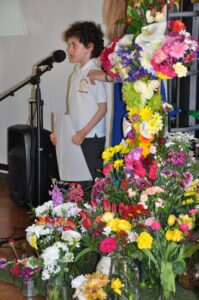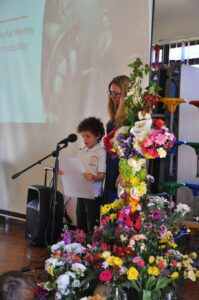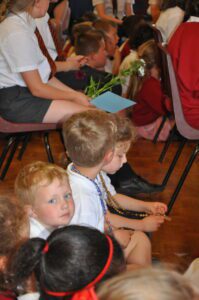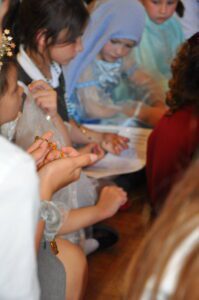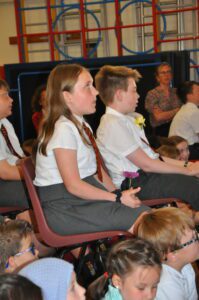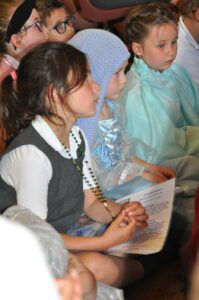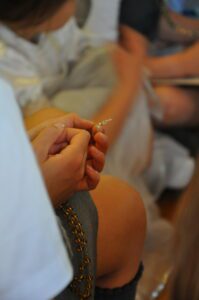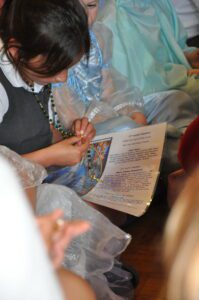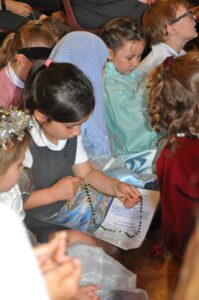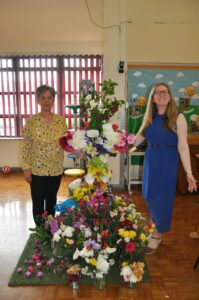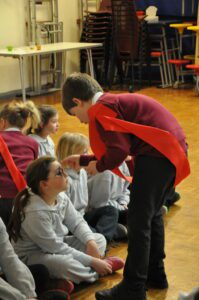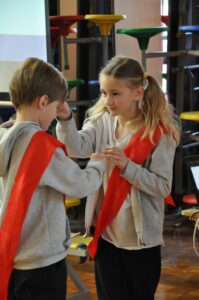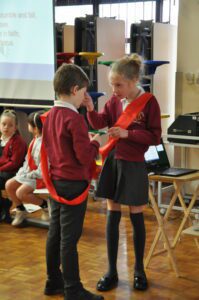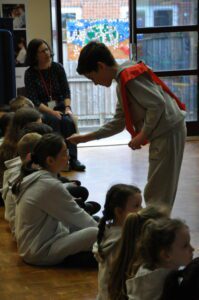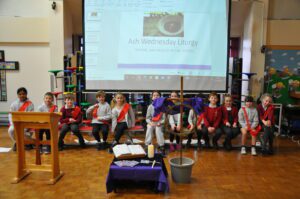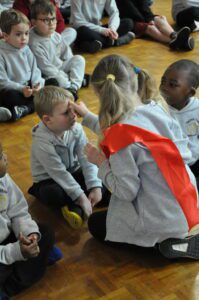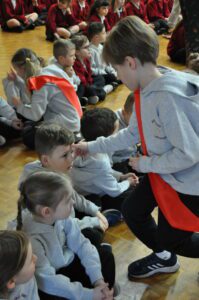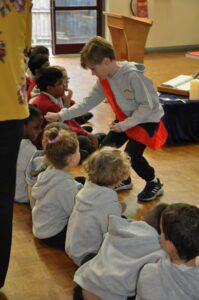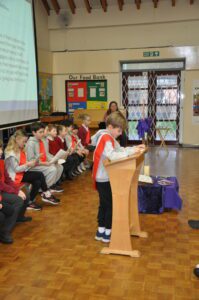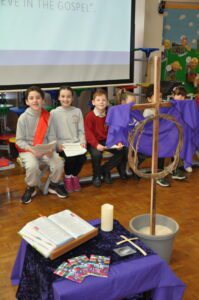Definitions of some forms of worship
Collective Worship is the way in which we connect spiritually with God, our creator, following the example of Christ, guided by the Holy Spirit. This comes in a multitude of forms and there is no right or wrong way to give glory to God.
Mass is at the centre of the celebration of our faith. We celebrate the mystery of the Eucharist as a faith community, praising alongside our parish community. Fr Paul Chipchase is our parish priest and leads our worship when we host school Masses.
Liturgy has a distinct, formalised format that mirrors that of the Mass. There are four sections: Gathering (coming together as a prayer community); Word (listening to God as found in the scriptures); Response (prayer time, reflection or action to digest and ponder over God’s word); Mission (taking the message from the liturgy out into our school, home, community and beyond).
Prayer, according to St. John Damascene, is the “raising of one’s mind and heart to God.” This can be vocalised or internal, contemplative prayer. We can use traditional prayers of the Church or our own thoughts and words.
Whole School Collective Worship
The Head Teacher leads whole school in Praise Assembly every week. The Assembly is closely linked with the liturgical year so that all members of the school community have an understanding of the weekly Ordo theme, colours and messages we listen to and see on Sunday at mass. However, this act of worship may address current issues, events in the week (both secular and religious) or other feasts in the Church’s year. This Assembly also celebrates the achievements of the previous week.
An integral part of Praise Assembly is the setting of the child led mission. This sets the weekly mission based on the theme of the week and it promotes the school mission statement, the Catholic Virtues promoted by Sacred Heart and it is a pivotal element of the Catholic Life of the school.
Key Stage Worship
On alternate weeks children will take part in a wider school Liturgy. The school will be split into two groups. St Peter’s Group = Year 1, Year 3 and Year 5. St Paul’s Group = EYFS, Year 2, Year 4 and Year 6. This allows the younger children to learn from the older children. These Liturgies will be child led. On the week when children are not participating in a wider school community they will take part in a class Liturgy. Pupils and staff evaluate the Liturgies from other classes during this slot.
Class Worship
Our children all have opportunities to lead their own class liturgies within the classroom at least once a week, though this is related to the pupils’ age with regards to their level of involvement.
- EYFS: the theme is decided by the Liturgical Calendar. The style of worship follows a whole school approach. Children are introduced to the four parts of a liturgy: Gather, Word, Response and Mission. Teachers embed the correct making of the Sign of the Cross, the school prayer, the Our Father and the Hail Mary. The children help to chose the resources for the liturgy and they make suggestions for the mission. Adults will evaluate the liturgies.
- KS1: the theme is decided by the Liturgical Calendar. The style of worship follows a whole school approach. Alongside their teacher, children suggest how to Gather in a way that suits the theme, they pick a piece of scripture from a shortlist to be the Word. Also, alongside the teacher they suggest how the children can Respond to the scripture and theme. Lastly, they think of a Mission for the class that week based on the Ordo theme. The teacher checks in on the mission later in the week. Adults evaluate the liturgies and start to train children on the evaluation process.
- LKS2: the theme is decided by the Liturgical Calendar. The style of worship follows a whole school approach. Children plan the Gather, Word, Response and Mission whilst the teacher/adult scribes their ideas on the planning sheet to allow the process to be more efficient. The children pick a piece of scripture from a shortlist to be the Word. The teacher checks in on the mission later in the week. Children evaluate the liturgies alongside an adult.
- UKS2: the theme is decided by the Liturgical Calendar. The style of worship follows a whole school approach. Children plan the Gather, Word, Response and Mission and independently complete the planning sheet. They chose an appropriate piece of scripture by accessing the Open Bible website. The teacher checks in on the mission later in the week. Children independently evaluate the liturgies and adults monitor the quality of evaluation.Family WorshipOur family members are invited to worship with our school community at key events in the year, such as the EYFS Welcome Liturgy and the Y6 Leavers’ Mass. They are also welcomed to participate in giving glory to God when classes take part in parish masses and different acts of worship throughout the academic year.Parents are also invited to take part in the child led weekly mission. These are recorded and posted out to the school community on Class Dojo.
Prayer Tables
Each class has a Prayer Space that changes regularly. This is a quiet area within the classroom setting where the children can encounter God at a time of their choosing. This usually involves some form of reading, reflection and action. Each prayer space will display the relevant liturgical colour, the ordo theme, a candle, a crucifix, the relevant scripture for that week, the class CW book and other prayer and worship resources.
Sacred Spaces
At Sacred Heart we are blessed to have a number of excellent spaces dedicated to prayer, peace, reflection and tranquillity. These include the prayer garden, the RE hub, the entrance foyer and the class prayer areas. Children are encouraged to use these spaces for spontaneous prayer.

